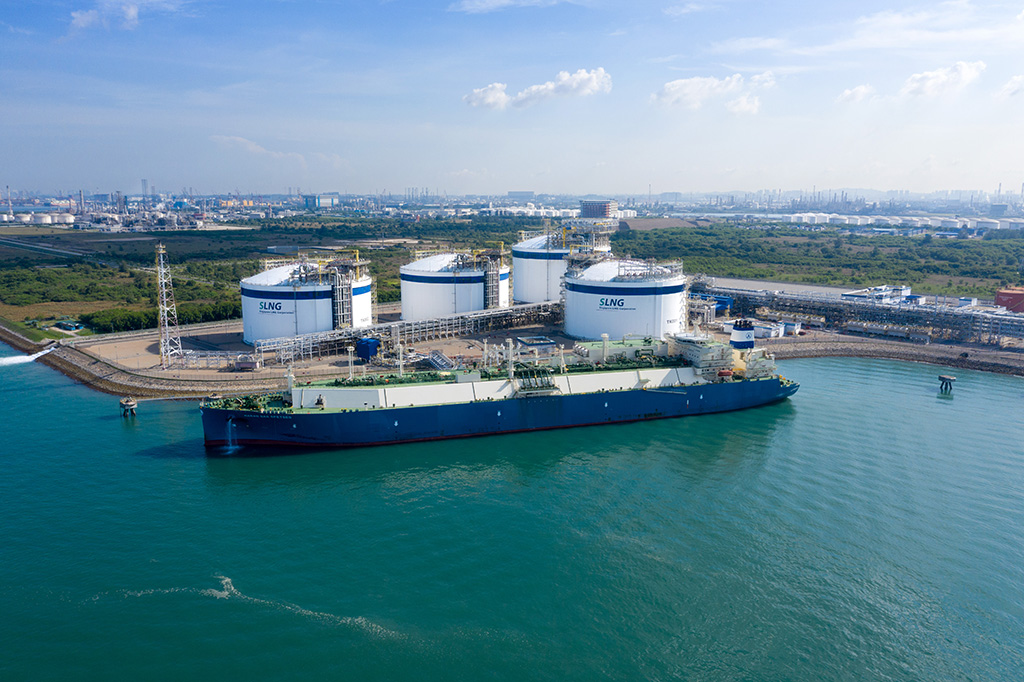Singapore LNG Corporation Pte Ltd (SLNG) is collaborating with Keppel Infrastructure (KI) through its wholly-owned subsidiary Keppel Energy Pte Ltd (KE) and another industry partner on the Front End Engineering Design (FEED) for a Natural Gas Liquids (NGL) Extraction Facility at the SLNG Terminal on Jurong Island. The project will unlock multiple benefits across the Liquefied Natural Gas (LNG) and Chemicals value chains, adopting a sustainable approach towards enhancing Singapore’s Energy Security and strengthening its position as an LNG and Chemicals Hub.

In a nutshell, the NGL Extraction Facility serves to remove the heavier hydrocarbons such as ethane or propane (also known as NGL) from LNG. The design of the Facility will adopt a sustainable approach, specifically through incorporating the use of cold energy from the SLNG Terminal’s operations in the extraction process – which can lead to significant carbon abatement.
The Project will allow for a higher handling flexibility of LNG through Singapore, which will in turn help to enhance Singapore’s energy security; open up more possibilities for the larger LNG eco-system, such as in the use of LNG as a marine fuel; and further advance Singapore’s ambition to be an LNG hub for the region.
Mr Tan Soo Koong, CEO, SLNG, said, “This project is part of SLNG’s continuing efforts to not just meet but exceed our Energy Security mandate; and to do so in an environmentally sustainable way. At the same time, it is also another step forward in our pursuit of our Vision to Catalyse New Possibilities in the Energy Transition. We are very excited to partner with established companies like Keppel on this project, which we believe will add significant value for the LNG eco-system and Chemicals industry in Singapore, and beyond.”
Additionally, the NGL extracted could be delivered to Singapore’s Chemicals complexes, including those on Jurong Island, to be used as a competitive feedstock in the manufacture of various chemical-based products. This project is a positive outcome of the Jurong Island Circular Economy Study, led by JTC to explore utilisation of cold energy on the island. It will contribute to Jurong Island’s transformation into a sustainable energy and chemicals park, as outlined in the Singapore Green Plan 2030.
Ms Cindy Lim, Chief Executive Officer, KI, said, “Together with our like-minded partners, Keppel Infrastructure is privileged and pleased to be involved and contribute towards the use of more sustainable sources of energy on Jurong Island through this FEED study. This effort is an important initiative for Keppel as we leverage our strong development capability and engineering expertise to create solutions and capture opportunities arising from the global energy transition. This is in line with Keppel’s Vision 2030, which places sustainability firmly at the core of its strategy”.
“We are watching this development closely. The NGL extraction project has the potential to increase the competitiveness and sustainability of our Chemicals industry by unlocking natural gas-based feedstock – an important energy transition fuel, and harnessing cold energy from the existing LNG regas terminal to reduce power consumption and carbon emissions respectively” said Mr Ow Kai Onn, Vice President & Head, Chemicals & Materials, Singapore Economic Development Board (EDB). “This is aligned with EDB’s interest and commitment to working closely with companies to create solutions in environmentally sustainable production as the Energy and Chemicals sector adapt to a low carbon future.”
Ms Cindy Koh, Director of JTC’s Energy and Chemicals Cluster, said, “The NGL extraction project is an important milestone in our engagements on the Jurong Island Circular Economy Study. We kickstarted the conversation with SLNG and Keppel to bring together like-minded companies to create value for the Jurong Island ecosystem. This collaboration will allow us to explore how cold energy can be efficiently harnessed from the LNG terminal, further reducing carbon footprint. Such close industry partnerships will enable us to successfully optimise resource use on Jurong Island.”